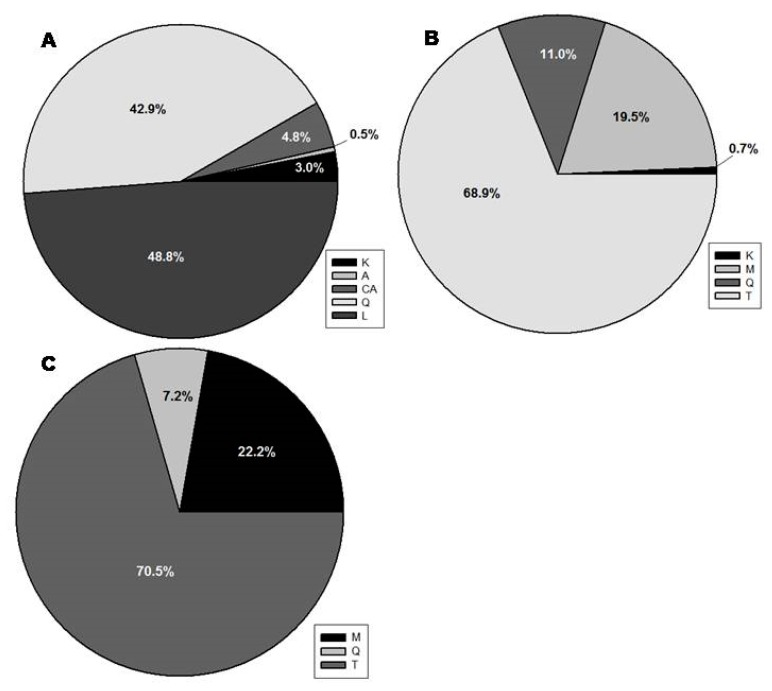Figure 2.
Percentage of each phenolic class (K—kaempferol derivatives; A—apigenin derivatives; CA—caffeic acid derivatives; L—luteolin derivatives; M—myricetin derivatives; Q—quercetin derivatives; T—tannin derivatives) relative to the total phenolic content (TPC—100%) in extracts of Phillyrea latifolia (A), Cistus incanus (B), and Pistacia lentiscus (C) leaves. For P. latifolia, L and Q are the most abundant classes of phenolics, corresponding to around 92% of TPC. Flavonoids (L, Q, K and A) represents around 95% of the phenolic compounds in the extracts. For C. incanus (B) and P. lentiscus (C), tannins (T) represents around 70% of the TPC, and all the other compounds are flavonoids (K, Q, and M for C. incanus, and Q and M for P. lentiscus), with M being the major flavonoid class in leaf extracts of both species.

